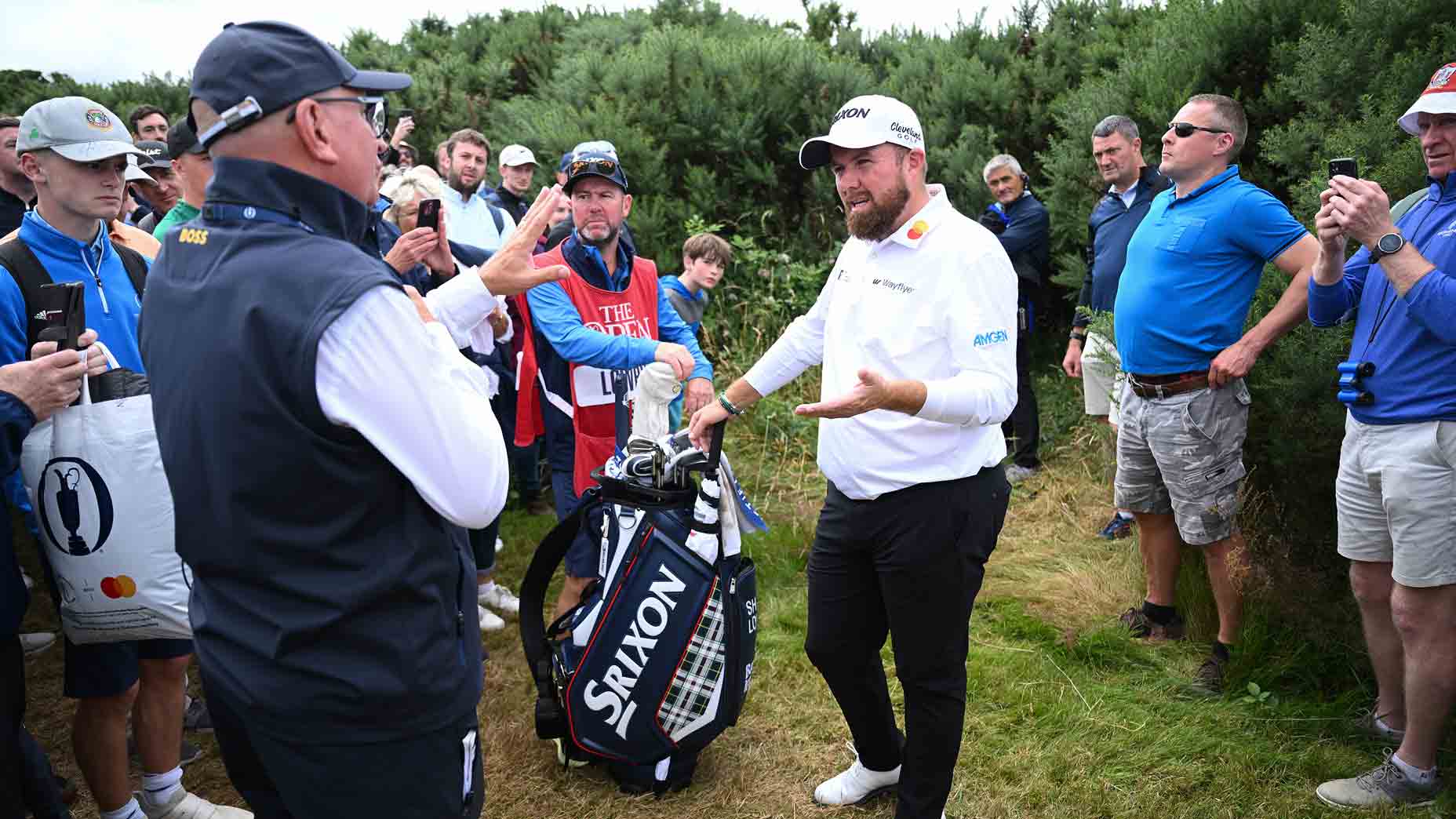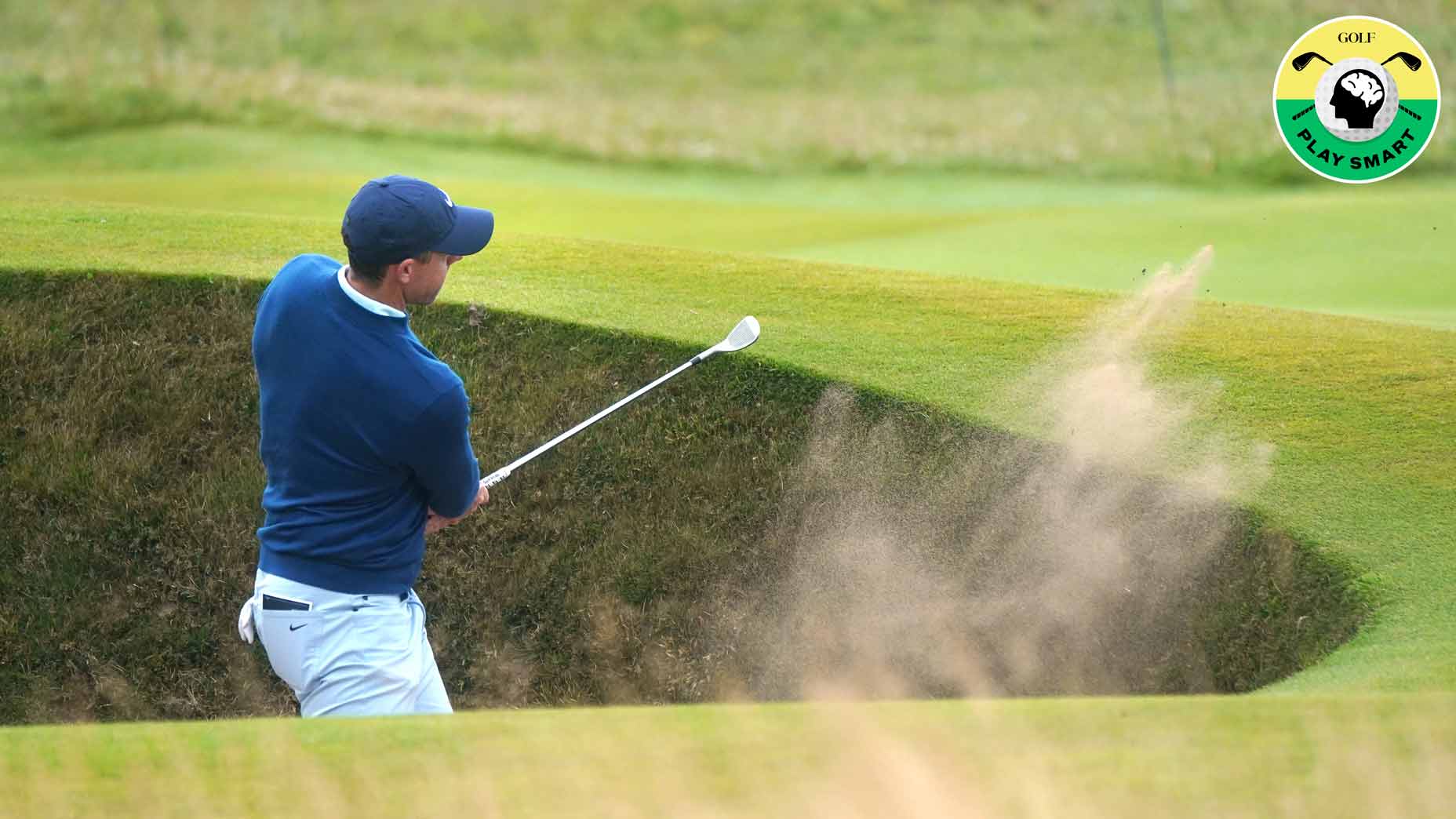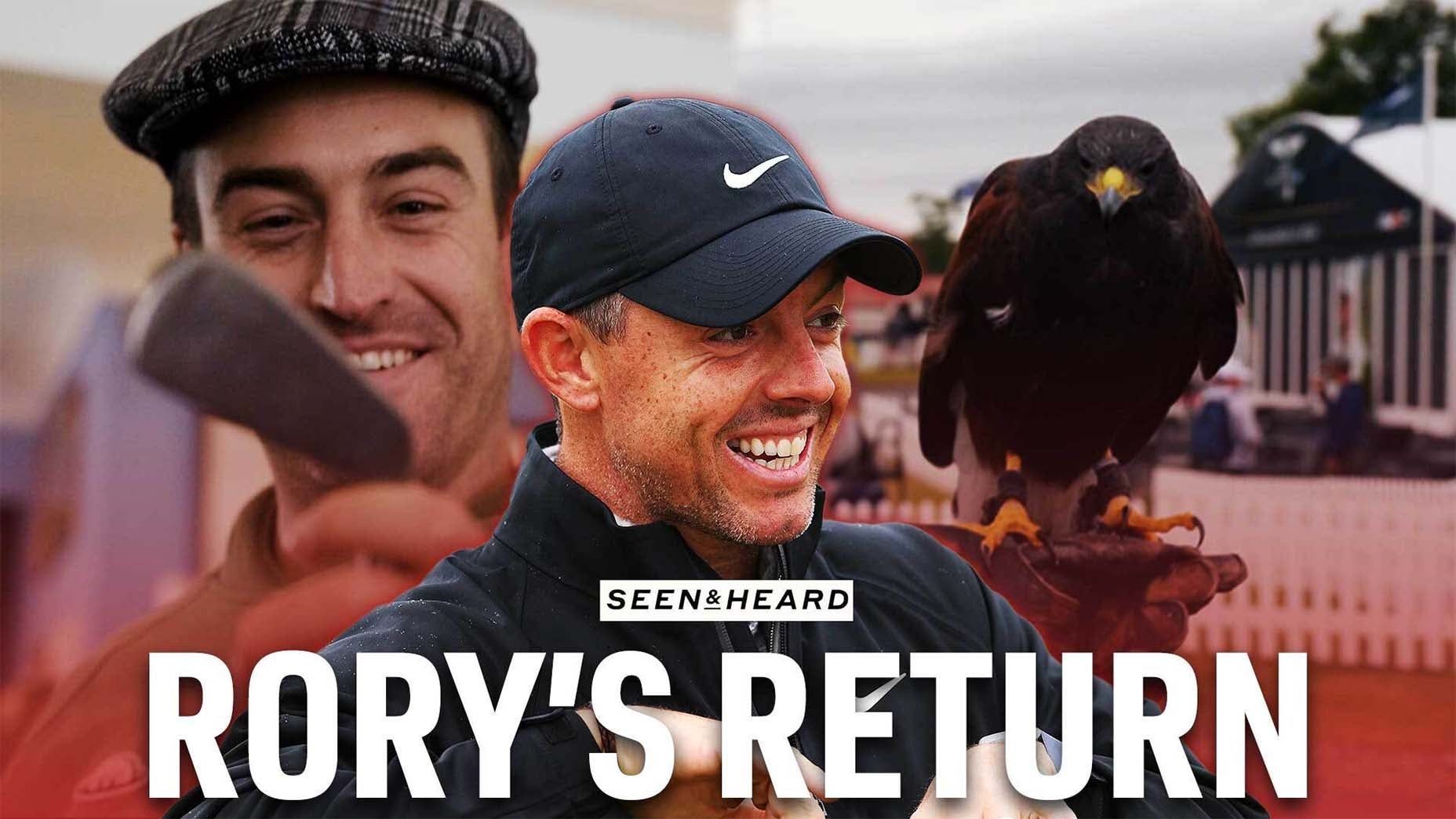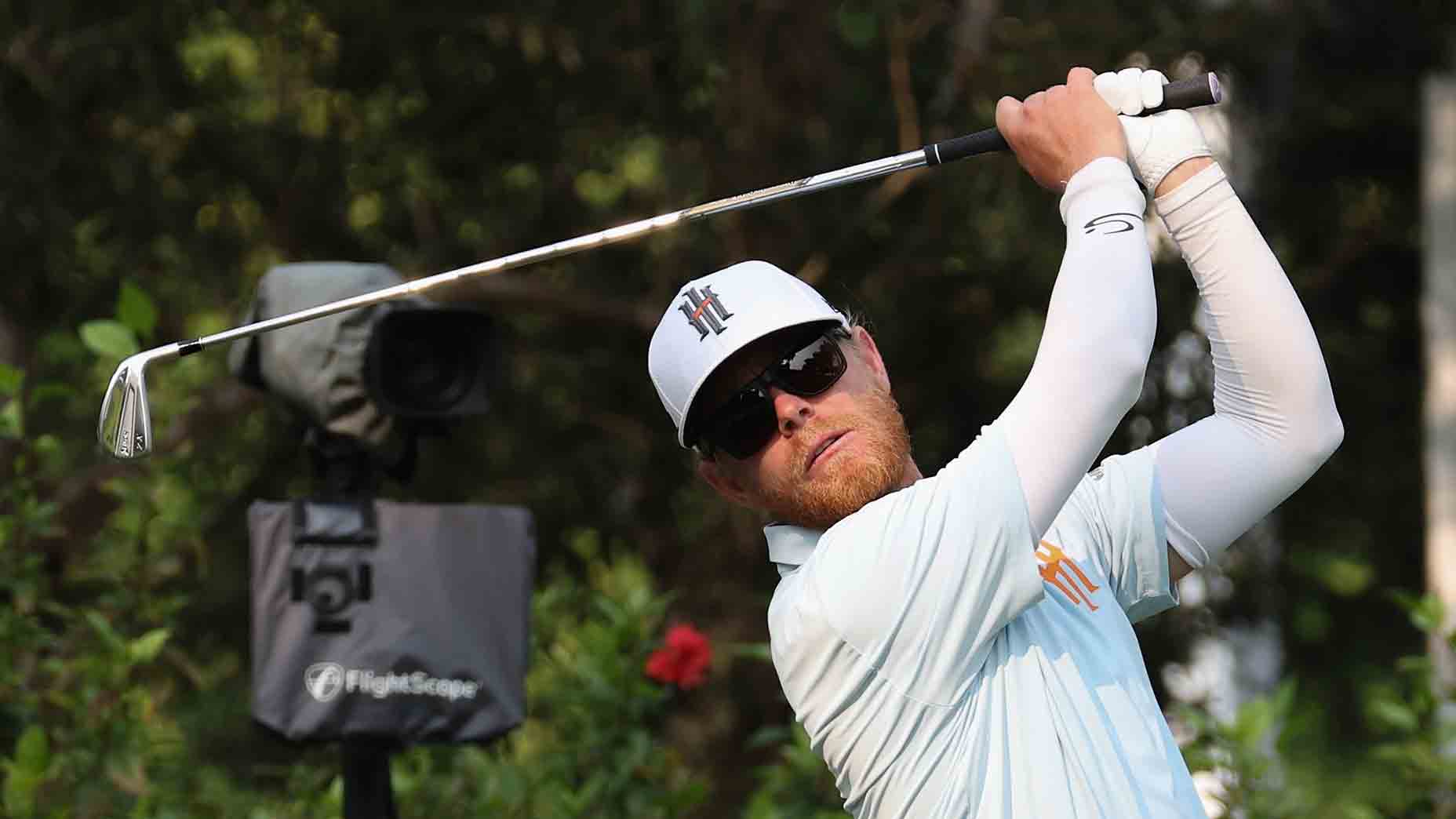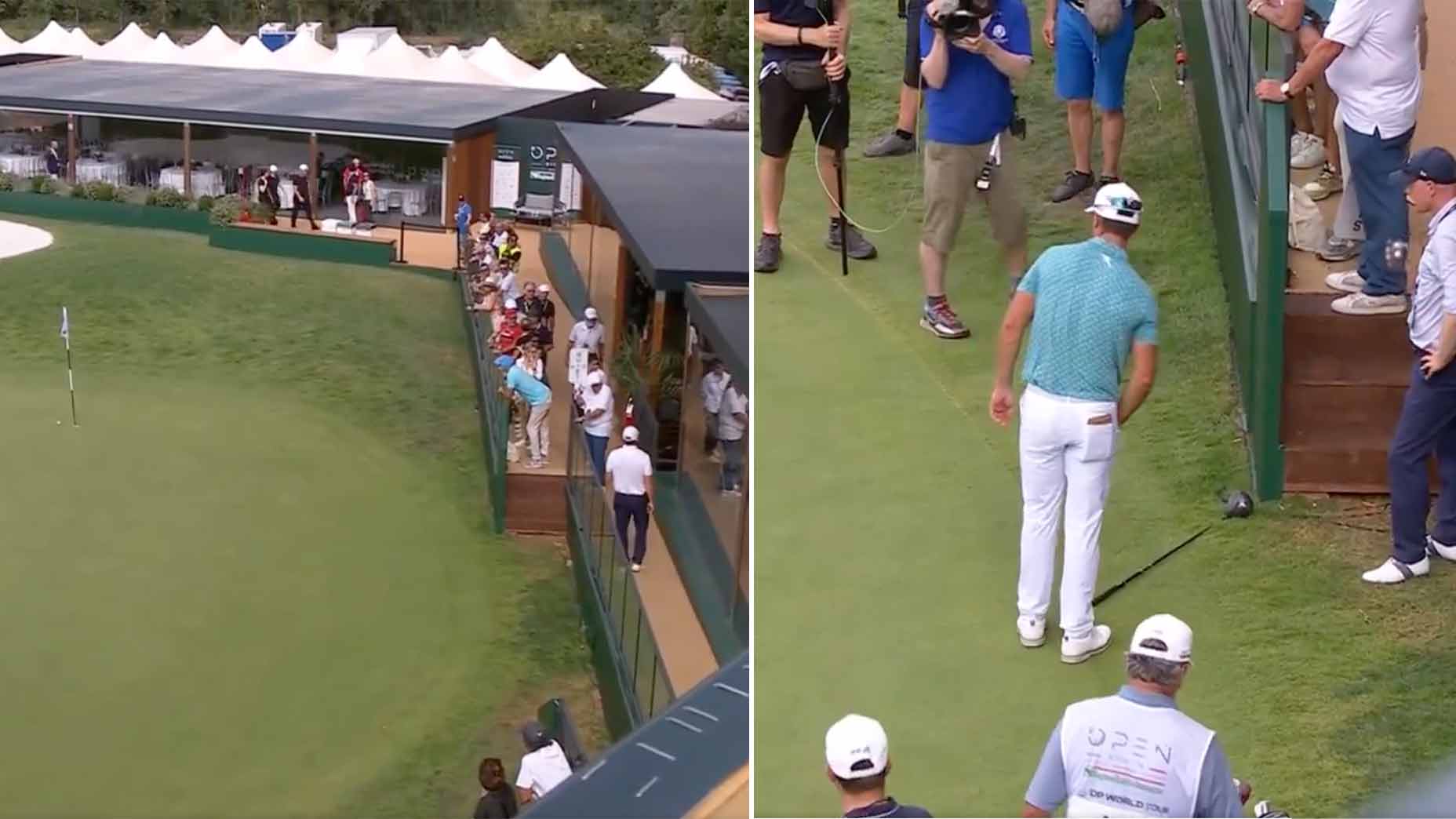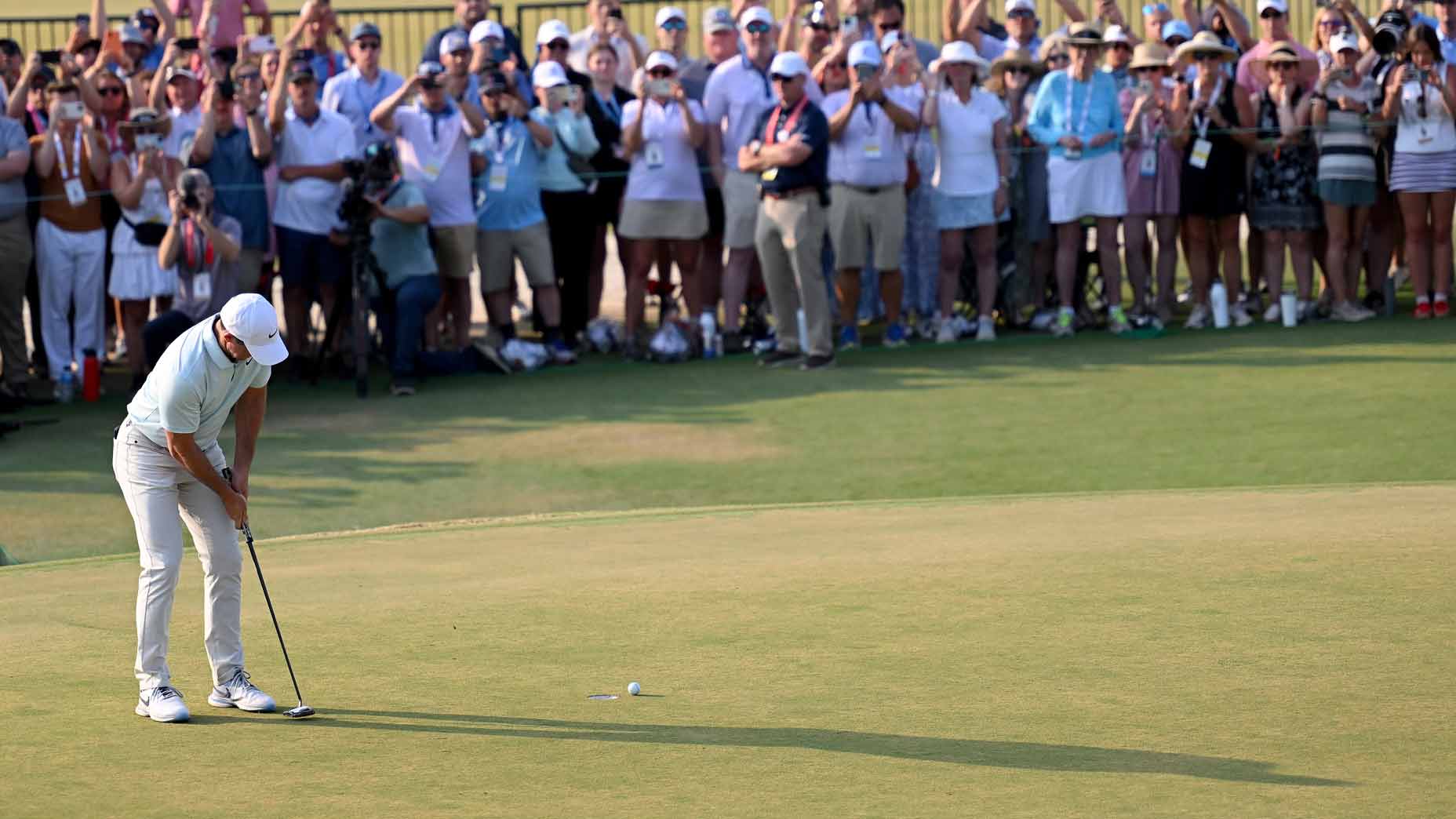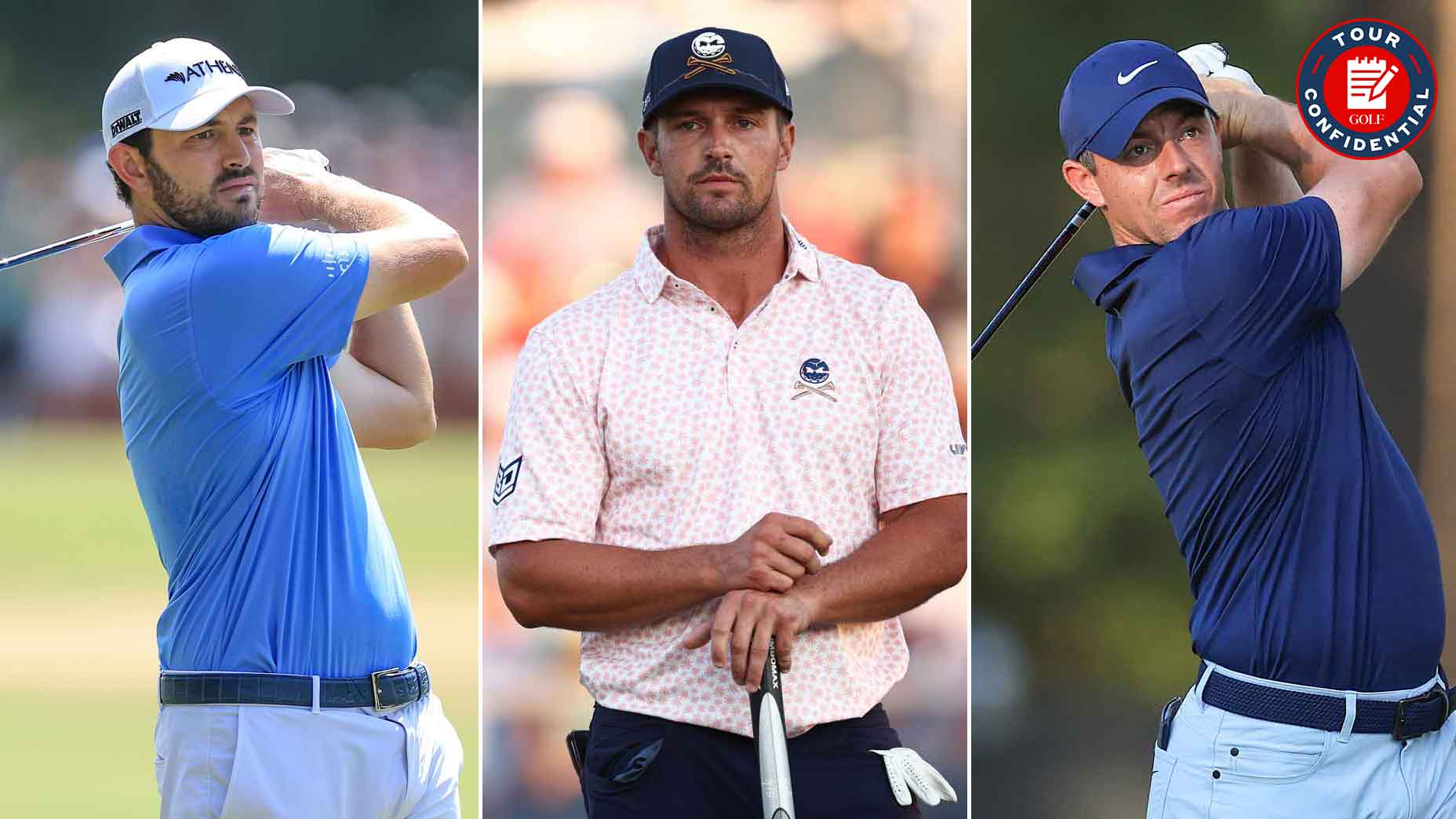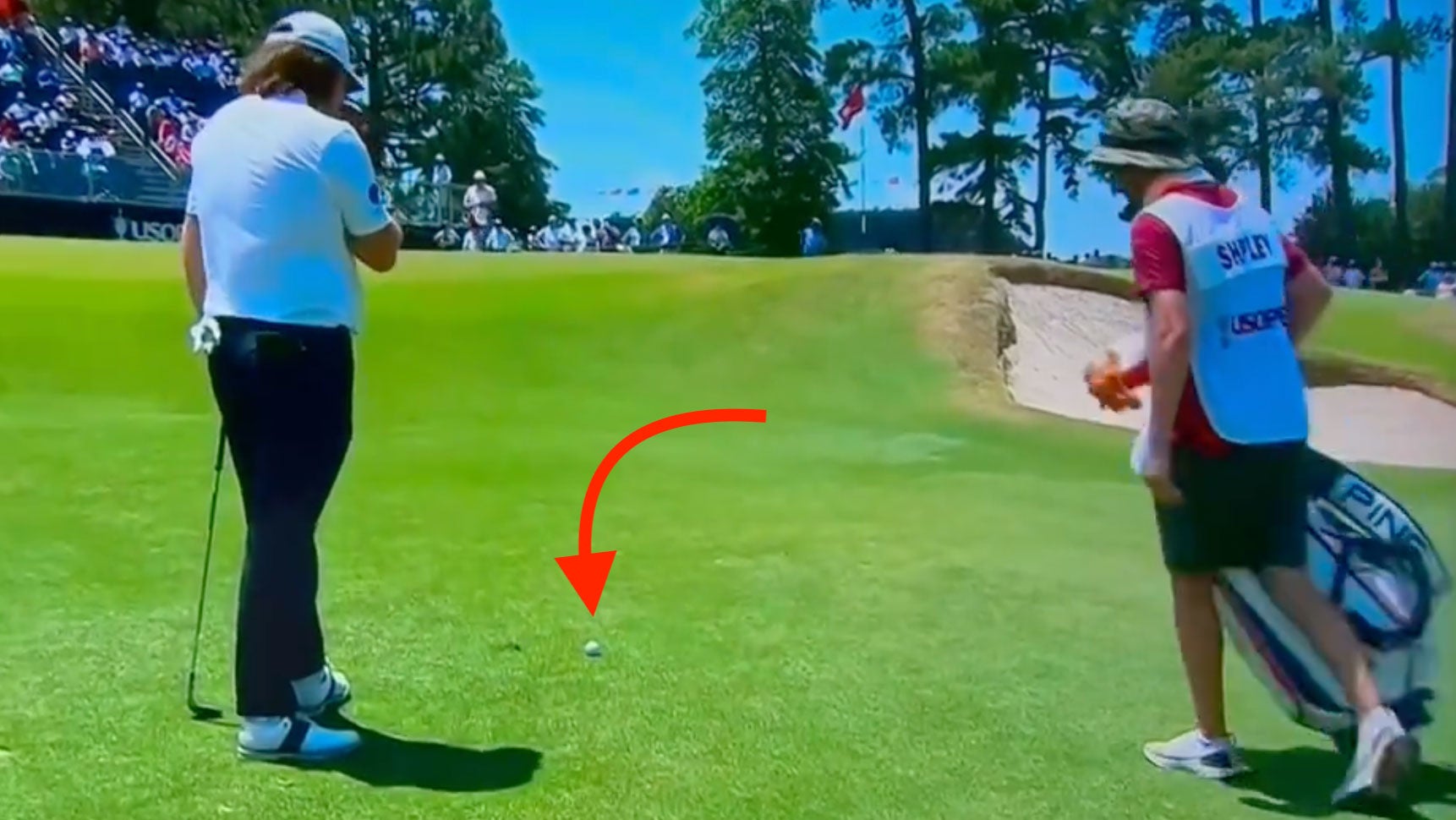That rule Rory McIlroy botched? Here’s why it tripped him up

Rory McIlroy at Spyglass Hill during the first round of the AT&T Pebble Beach Pro-Am.
getty images
The late five-star U.S. general, Douglas MacArthur, proclaimed that “rules are made to be broken.” The general must not have been much of a golfer (and, it seems, he wasn’t, at least not according to this 2010 Saturday Evening Post profile), because in golf, rule-breaking, even the unintentional kind, can be costly and sometimes even a bit embarrassing.
Rory McIlroy was reminded of that at the AT&T Pebble Beach Pro-Am Thursday when his tee shot on Spyglass Hill’s par-5 7th hole — his 16th hole of the day — nestled in tangled grass under a pine tree. With no reasonable way out from the horrid lie, McIlroy declared his ball unplayable and took “back-on-the-line” relief, which permits golfers, when dropping, to go as far back as they like on the line from the hole through the spot where their ball lies, for the price of a one-shot penalty.
McIlroy proceeded correctly up until he took his actual drop, a yard or so right of his direct line. That was a no-no, because under Rule 14.3, McIlroy was required to drop his ball on the line. He wasn’t trying to pull a fast one — he just didn’t know the rule, which ended up retroactively costing him two more penalty strokes, resulting in an unsightly 8 on his card.
“Unbeknownst to me, the rule changed in January 2023 where you used to be able to come back on-line, take a club length either side,” McIlroy said after he had taken his medicine from a rules official and signed for a 71. “That was changed in 2019 to be able to do that. I wasn’t aware that that rule was changed again in 2023, so I took a drop thinking of the 2019 rules when everything was sort of changed, not knowing that the rule was changed again in 2023, so got a two-stroke penalty there.”
If McIlroy’s explainer is making your brain melt, we empathize! There’s much to process there. Ask Phil Mickelson, who nearly made the same gaffe in the second round of the PGA Championship last summer. While taking back-on-the-line relief on the 6th hole at Oak Hill, Mickelson was convinced he could drop within a club length of his direct line. Eventually a couple of rules officials convinced him otherwise, saving him a couple of penalty strokes for what would have been an incorrect drop.
“That rule changed,” an official told Mickelson in an exchange that was captured on the telecast.
“This year?” Mickelson said. “I never heard that.”
Reasonable minds might wonder, What’s going on here? How could two of the game’s most established players be unaware of the proper protocol for a relatively common drop?
Here, we’ll return to McIlroy’s explanation above, which gets to the root of the answer: In the governing bodies’ ongoing quest to streamline the rules, the rule book is altered and updated with some regularity — every four years, in fact. The modifications admittedly can be a lot to absorb, but if golf puts dinner on your table, you’d be wise to keep up, just as, say, stock traders would be prudent to stay apprised of the latest Securities and Exchange Commission regulations. It’s all part of the job, or at least it should be. Sure, pro golfers have a safety net in roaming rules officials, but goofs still happen (see: McIlroy, Thursday).
In fairness to McIlroy and Mickelson, though, what’s up with this rule? Why was it tweaked twice in four years?
The short answer is simplification.
The long answer is golfers used to need a Ph.D. in Reliefology to know where and how to properly take a drop. Up until 2019, Rule 20-2c required that players were versed on nine (!) different re-dropping scenarios, which the USGA acknowledged “was difficult to understand and apply.” So, beginning on Jan. 1, 2019, the governing bodies simplified the drop rules so that all relief areas would be either one or two club-lengths from a reference point; in the case of back-on-line relief, the permitted drop area was one club length no closer to the hole, which is what McIlroy, until a rules official at Spyglass educated him, believed was still the rule.
What McIlroy had missed was the 2023 update to the back-on-line-relief rule, which states that players now must drop the ball on the line. The ball can roll up to one club-length in any direction from where it hits the ground, even toward the hole, meaning it’s unlikely players will have to drop more than once to get their ball back in play.
Subtle difference from the 2019 standard but an important one, and — as was the case with the previous update — implemented to make the drop rules even easier to understand and apply.
And now, for the most hardcore of rules junkies, here’s an even longer explanation, which the USGA rules department provided to GOLF.com:
The 2019 Rules of Golf introduced the “relief area” concept as an important part of our efforts to make the Rules easier to understand and apply and this concept has been a great success in simplifying how players take relief.
However, the relief area concept works only when there is a reference point that the relief area can be measured from.
In all but one relief procedure, the reference point is pre-determined, and this means that it is a relatively straightforward task to determine where the relief area is and where the ball must be dropped when relief is taken.
The one outlier is back-on-the-line relief, which is fundamentally different from other relief procedure in that the player can select anywhere along a line where they want to take relief.
In the 2019 Rules of Golf, there was an attempt to make back-on-the-line relief more like other procedures by making the player pick a spot before dropping or, if they didn’t do that, the player’s dropped ball would be used to establish that spot.
However, not long after the 2019 Rules went into effect, it was clear that this was not helping to simplify this relief procedure, and instead was making this more difficult to understand.
To resolve this confusion, back-on-the-line relief looks more like it used to before 2019, fully accepting that it is different from any other relief procedure.
To take back-on-the-line relief under the current Rules, a player is once again required to drop a ball on the line and it is it allowed to roll up to one club-length in any direction, including closer to the hole.
Got it? Good.
After 13 months of action, might the back-on-line relief rule benefit from yet further massaging in the eyes of the governing bodies? It won’t be too long before we find out. The next rules updates likely will be announced in 2026.
Presumably Rory and Phil will be paying close attention.


